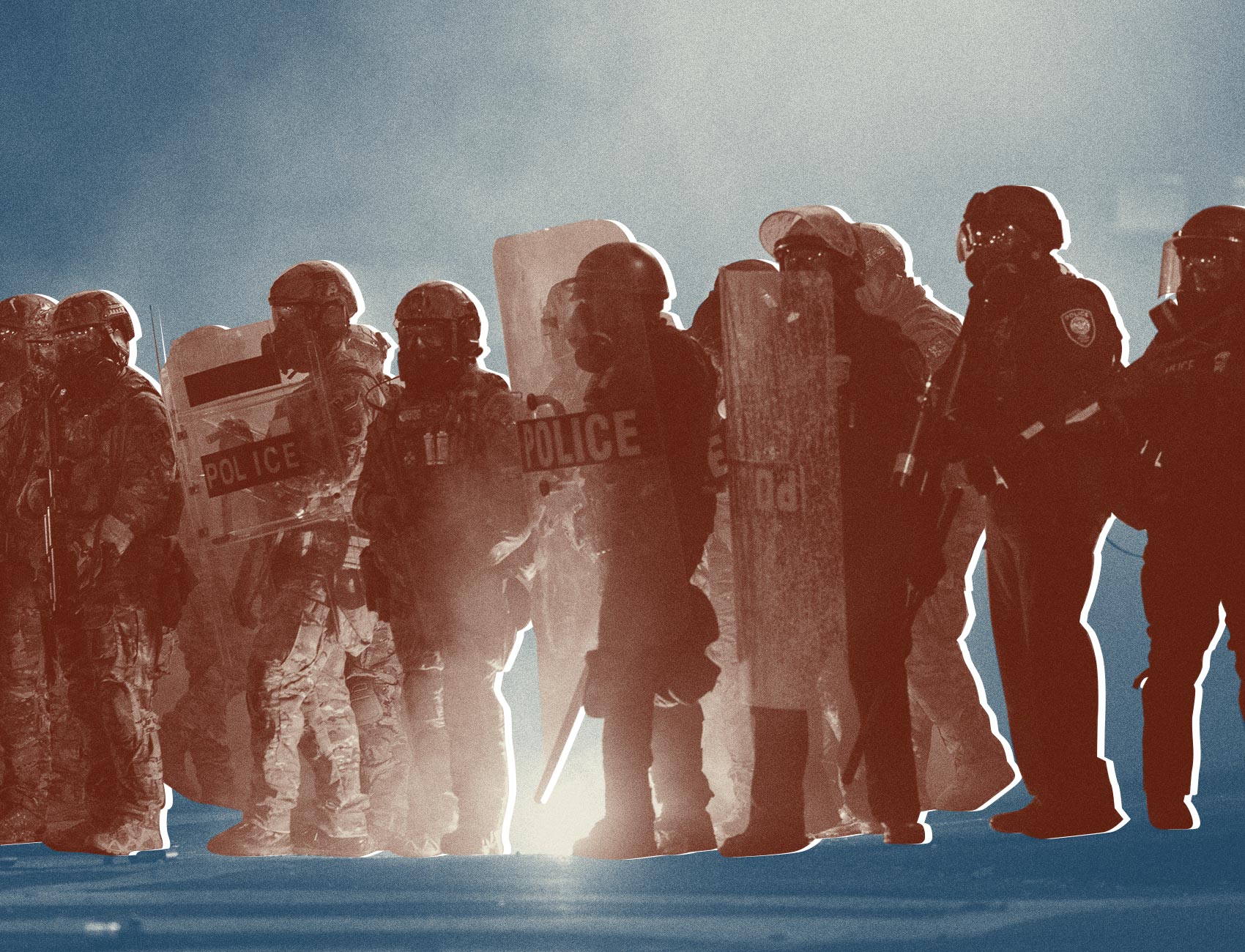Political Report
State Lawmakers Are Pushing New Bills To Reduce Reliance On Police
So far in 2021, lawmakers in several states have introduced at least 12 bills to shrink the footprint of policing.

So far in 2021, lawmakers in several states have introduced at least 12 bills to shrink the footprint of policing.
Since the police killings of George Floyd and Breonna Taylor last year, calls to move responsibilities and resources away from police departments have intensified. While those moves mostly happen at a city level, lawmakers in at least nine states have introduced legislation to keep cops out of schools, disincentivize arrest quotas, civilianize traffic enforcement, and have health professionals respond to calls about people experiencing health crises instead of police.
So far this year, state lawmakers have introduced at least 12 bills that could shrink the police’s presence and instead invest in measures to better support people’s behavioral and mental health needs.
“Cops respond to harms that have already happened—what we are trying to do is put resources to all the complex needs that our communities have, which would help us interrupt and prevent harm from happening,” said Woods Ervin, co-founder of Interrupting Criminalization and communications director for Critical Resistance, an organization that seeks to abolish the prison industrial complex. “The issue that we’re trying to resolve is not to respond to harm with more harm. We want to actually get to the root causes of why these things happen in the first place.”
Time and again across the United States, encounters between police and people experiencing mental health crises have turned deadly. Last September, footage emerged of Rochester, New York, police officers putting a mesh bag over Daniel Prude‘s head, and kneeling on him until he stopped breathing. His brother had called the police for help after Prude seemed to be in psychological distress. The footage led to the resignations of the Rochester police chief and several others—but what happened to Prude speaks to a troubling nationwide trend. According to a Washington Post database of fatal police shootings since Jan. 1, 2015, nearly 1,400 of the almost 6,000 people shot and killed by police in the past six years had mental illness.
Now, cities are increasingly looking to alternative ways to respond to people experiencing mental health crises. In the past year, cities like San Francisco have begun sending unarmed health professionals instead of police to respond to 911 calls involving nonviolent people experiencing mental health crises or substance use issues.
This year, lawmakers in at least five states have introduced legislation that moves in that direction. In Washington, lawmakers want to expand behavioral health, suicide prevention, and crisis response services with an ultimate goal of reducing reliance on emergency room services and law enforcement response to health crises. An Indiana state representative wants mental health professionals to accompany cops to calls involving mental health or substance use disorder crises, while a measure in Oregon seeks to develop a “statewide strategy involving behavioral health mobile crisis response teams” in order to reduce “the burden of law enforcement to respond to complex mental and behavioral health crises, issues that are outside the scope of policing.” A Utah bill to explore training and developing crisis intervention teams across the state passed unanimously in the state’s Senate last week.
Those proposals all seek to get health professionals involved in crisis response, but only Maryland’s measure actively discourages law enforcement participation. If it passes, the state Department of Health must require crisis response grant funding requests to contain standards that “minimize law enforcement interaction for individuals in crisis.” The measure would also give 911 the authority to dispatch crisis response teams.
“When police are involved at all in the equation, it brings immediate danger,” said Melina Abdullah, co-founder of the Los Angeles chapter of Black Lives Matter and a professor of Pan-African studies at California State University. “We want people to remember police are not the answer to mental health calls.”
She pointed to the story of Nick Burgos, who was being treated for mental health issues at the Harbor-UCLA Medical Center when a sheriff’s deputy shot him dead for damaging property.
Police “do not have the expertise to respond to mental health issues,” Abdullah said. “Even the presence of a mental health professional can’t stop them” from potentially using deadly force when responding to a mental health call.
Similarly, following video after video of police or school resource officers brutalizing students, lawmakers in cities and states across the country are looking to keep cops out of schools. In Illinois, one state representative introduced a bill to keep police officers off school grounds unless there is an imminent threat of danger. Another bill in Oregon seeks to prohibit school boards from employing law enforcement personnel, and requires that certain money budgeted for law enforcement be “redistributed to community outreach and to meeting students’ mental and behavioral health needs.”
One of the most far-reaching functions that could be separated from police is traffic enforcement, with over 24 million people each year coming into contact with police during a traffic stop, according to data from the Department of Justice. Traffic stops are the most common way people come into contact with police, and those encounters can turn deadly.
A recent article in the Stanford Law Review put forth a framework for how local governments can disentangle traffic enforcement from police departments. Under the framework, local governments would reassign most traffic enforcement to separate traffic agencies that are independent from the police department. The city of Berkeley, California, has already passed a proposal to do so, and lawmakers in two states—Hawaii and Maryland—have introduced legislation that would begin to tackle some of that disentangling process.
The bill being considered in Maryland would allow Montgomery County to make the county’s Department of Transportation responsible for implementing automated traffic enforcement programs. Department of Transportation employees, not police officers, would then be responsible for issuing citations related to automated traffic enforcement systems. Similarly, the legislation in Hawaii would amend the traffic code to allow non-police workers, like state employees or contractors, to cite for certain traffic violations.
“It’s a common sense response—you should have the appropriate professional respond to the appropriate issues,” Abdullah said. “We don’t need police with guns responding to a traffic stop.”
Police officers are sometimes incentivized to issue traffic tickets or make arrests when their departments use arrest or ticket quotas as a measure of officer performance. In order to reduce the number of arbitrary traffic stops (and make it easier to separate traffic enforcement from police), state and local governments could discourage or even ban such quotas.
In the first month of 2021, at least three pieces of legislation to do just that have been introduced. Lawmakers in Maryland, New York, and New Jersey have all filed bills that prohibit traffic or arrest quotas from being used as a metric of an officer’s performance.
“When people think about how we can prevent violence and promote public safety, we need to think much more broadly than policing,” said Christy Lopez, a Georgetown Law professor and co-lead of the school’s Program on Innovative Policing. “People think it is only arrests, only people with guns, only jail that can keep people safe, and we know that’s not the case.” Lopez added that housing and better mental health care could help prevent violent crime.
The move to invest in alternatives to police isn’t “taking anything away from public safety,” said Lopez, “it’s more directly addressing the root causes of a lack of public safety.”
